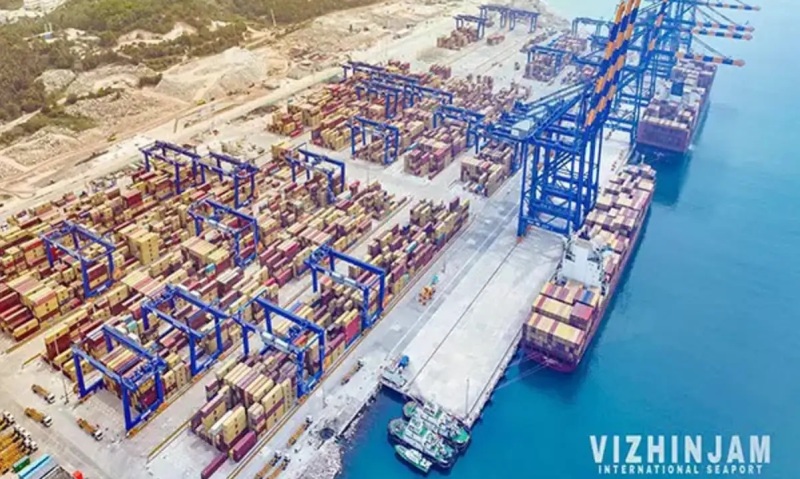
Vizhinjam Port crosses ₹450 crore revenue as India’s first transshipment hub gains momentum
KOCHI : Vizhinjam International Seaport, which is fast transforming into India’s transshipment hub, has crossed ₹450 crore in revenue generated from cargo handling. This milestone comes as the port enters its eighth month of commercial operations. So far, 448 ships have docked at Vizhinjam for cargo handling, with 9.77 lakh containers managed.
This data highlights the vast potential of Vizhinjam Port—India’s first semi-automated transshipment port—not only in opening up economic opportunities for Kerala, but also in strengthening the country’s transshipment infrastructure. India sees an annual sea cargo movement of around 2 to 2.5 crore containers. About 25% of this is handled through transshipment ports capable of accommodating mother vessels that are 400 metres or longer.
From Vizhinjam, which can receive such large mother vessels, containers are transferred to smaller vessels and transported to shallower ports and vice versa.
Since India currently lacks comparable transshipment ports, the majority of this activity is concentrated in foreign ports like Colombo (Sri Lanka), Singapore and Salalah (Oman). As a result, around 3 million containers are handled abroad, leading to the outflow of nearly USD 220 million in foreign exchange. This constitutes a substantial loss to the Indian economy. Vizhinjam currently has the capacity to handle up to 1.5 million containers per year.
Once the next phase of development is completed in 2028, the port is projected to handle over 30 lakh containers annually. The current 800-metre-long berth will be extended to 2 kilometres, allowing up to four 400-metre-long mother vessels to dock simultaneously.
At present, 24 yard cranes and eight ship-to-shore cranes manage container movement at the port. In the next phase, these numbers will increase to 60 yard cranes and 20 ship-to-shore cranes, notably improving operational speed. The completion of multipurpose berths, fuel bunkering berths and road and rail connectivity in this phase will further enhance the port’s cargo-handling efficiency.
What will Kerala Government gain?
According to Adani Ports and Special Economic Zone general manager (Projects) Sunil Kumar Ayyappan, the Kerala government will receive 1% of the port’s total annual revenue in 2034 as its first share. This share will increase by 1% each year until it reaches 40%, over a 40-year period, which could earn the state nearly ₹25,000 crore.
Currently, the only direct financial gain for the Kerala government is through GST revenue, which has so far amounted to ₹75 crore.
